Misadventure in the Cerros of Escazu
Within my first few months here in Costa Rica, I heard about the challenging Pico Blanco hike. Pico Blanco is the name of a peak in the Cerros of Escazu, and the hike up to this summit is popular with folks training for Chirripo. Even though this mountain range is literally about 20 minutes from where I live, I’ve gone 8 months without having the chance to make it up there. This past weekend I committed to staying in San Jose and decided that it was a great opportunity to finally check the hike off my bucket list.
I spent a couple of days doing research and finding maps of the hike online. Pico Blanco can be confusing because there are multiple routes that will lead you to the summit with widely varying reviews on how difficult each of those routes can be. I finally decided to try a route that began and ended in Bebedero, a tiny little town in Escazu. I rounded up some adventure pals and we made plans to head to the trail around 9am on Sunday. Things got off to a rough start right off the bat as our Uber driver dropped us off at the wrong reference point in Bebedero. I used the Bebedero bus station as our destination, but as it turns out there are two bus stops with the exact same name, about 3km apart. As we debated what to do, our Uber driver miraculously reappeared because my friend Emma left her sunglasses in his car. We asked him to take us to the correct bus station and we were back on track!
We got to the correct stop and had to wait about half an hour for two other friends to join us. At this point I was feeling pretty glad that I brought a flashlight with me, as some reviews of the trail claimed the walk could take up to eight hours. We started down the path and immediately were rewarded with some beautiful views. Green, lush mountains, bright blue skies, and shining green coffee plants surrounded us on all sides. I meticulously checked my trail map as we walked to confirm that we were on the right path. After about an hour of walking, we decided to verify that we were on the right camino. We came upon a group of guys smoking and drinking and asked them if we were headed in the right direction to reach Pico Blanco. Almost in unison they all shouted “NO”, and told us we were walking in the completely wrong direction. My heart sunk with the news.. had I really led all my friends astray? Turns out, yup I had! Oops…
The guys told us that we were several kilometers away from the trailhead and there was no way we could make it there, hike to the summit, and come back down before dark. We didn’t want to just give up on the day though, so we asked their opinion on an alternate hike. They told us that if we continued on the same path for about another hour, past two rivers, we would end up at the trail head for Las Torres Eolicas de Santa Ana, or the Wind Turbines of Santa Ana. I had heard of this hike before, and everyone agreed that it sounded like a good option! We continued on down the road, and picked up an extra companion – Tigre the adventure dog! With stripes like a tiger, Tigre led us on to the start of the next trail in Matinilla. Unfortunately we lost one of my friends, who had coincidentally done the same hike a few weeks prior. Then there were four..
We started the trek up to las torres and things were going pretty smoothly for the first twenty minutes or so. After the smooth sailing start, the path became incredibly steep, with lots of loose rocks and entire chunks of trail completely washed out. I was feeling fine with the trail, but my friend Emma has a bad knee and she started to lag behind a bit until at one point she decided that maybe she shouldn’t continue on. We debated for a few minutes what to do, and we decided that the three of us that still wanted to hike would run as fast as we could up the trail, so that Emma would only be left behind for a short amount of time. Of course, we made this decision with no idea how much longer the trail was nor what condition it would be like. We continued on our way, and were rewarded with some AMAZING views. The path did not even out much and continued to be very steep, muddy, and rocky. With Tigre in the lead, we continued along, debating whether we should turn back for Emma periodically. After what seemed like just a few minutes, but was actually a little over an hour a lone wind turbine appeared in the clouds. We made it to the summit! The summit was completely shrouded in clouds, but we made it all the same! We could only see a few of the turbines because of the cloudy conditions but I was surprised by how enormous they were. They were also quite loud, as they spun round and round generating power for the valley below. It felt good to finally reach a summit, especially after putting in so much work on the steep trail. After chilling a bit on the top, and sadly losing our guide Tigre, it was time to make our way back down the trail. This part went by quickly, but was a lot scarier in my opinion, with such steep trails and loose rocks. We passed back through mystical looking forests and eventually made it back to where we left Emma. I felt like maybe an hour tops had passed, but she had been chilling on the side of the trail for over 2 hours by herself!
At this point we were all quite hungry, but the next part of the adventure was to figure out how to get back to town from where we were. We knew that there was a bus that came to where the trail started, but it was also a Sunday and bus service can be pretty infrequent. We started to walk down the road a bit aimlessly hoping to find someone to ask for help. All of a sudden, we saw a bus heading in the opposite direction, back toward the trailhead so we all sprinted back to where we came from to catch the bus. The bus took us into downtown Santa Ana where we saw a cool looking place with restaurants in storage containers so we got off to check it out and finally get some grub. I ate some Argentine empanadas and had a delicious IPA and never felt happier! We had one more slight misadventure when we tried to take a bus from Escazu to San Jose with no change, but a kind soul lent us some change and we managed to make it on the bus. In the end, I still didn’t make it up to Pico Blanco but it was a super fun day all the same! 😊
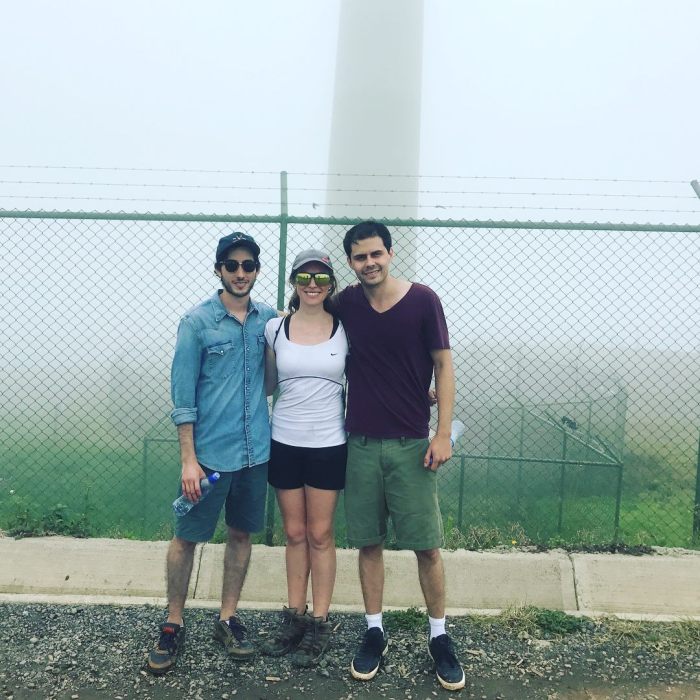
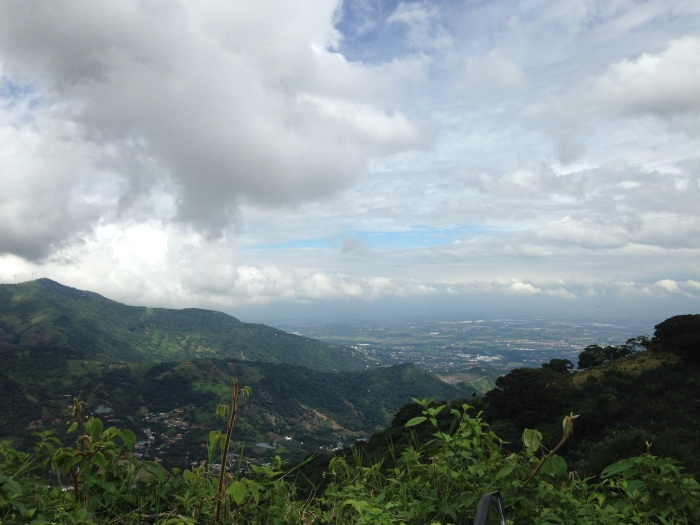
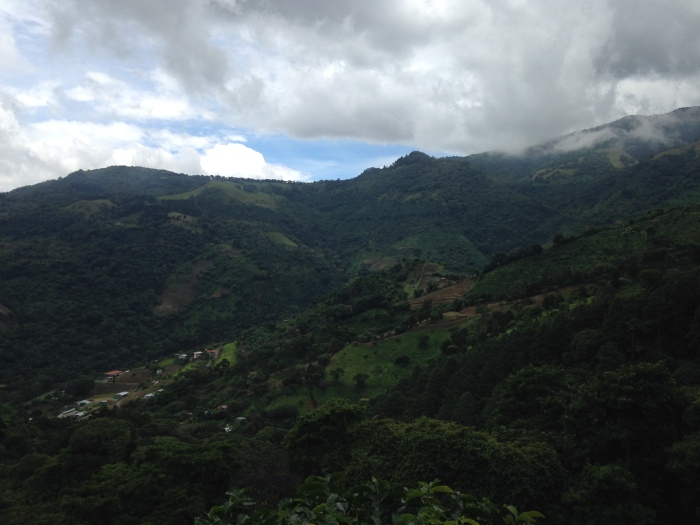
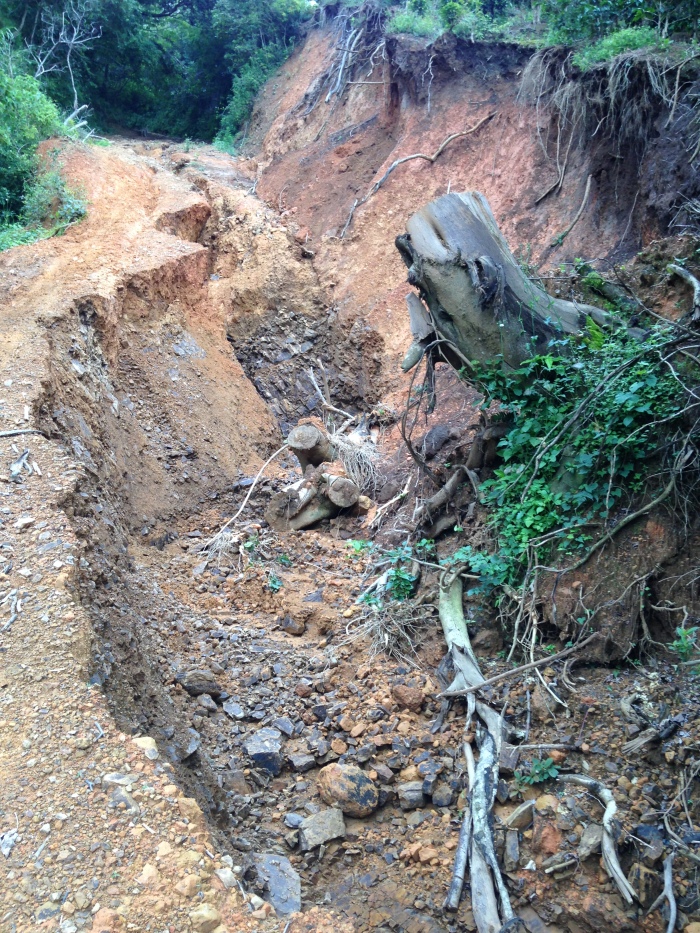
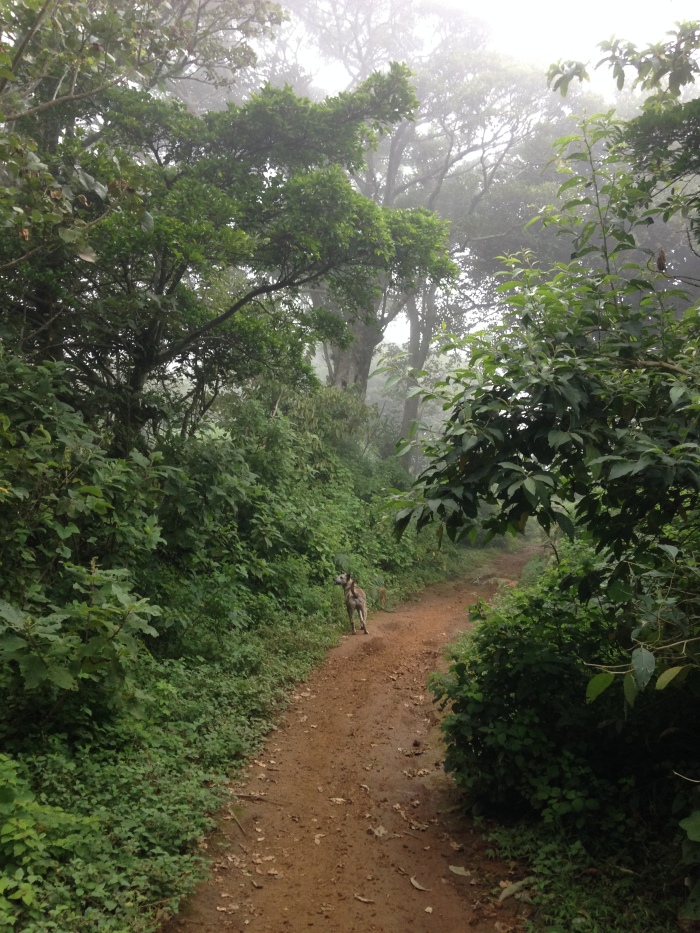
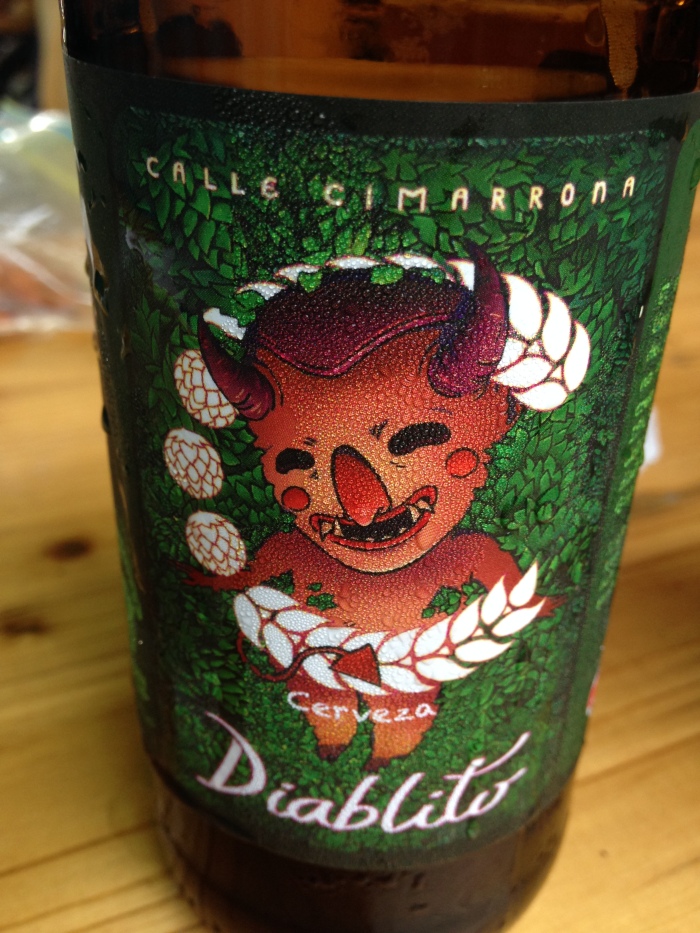
Learning to surf
When you think of Costa Rica, what are the first things that come to mind? Probably visions of tropical rainforests? Lazy sloths traipsing in treetops? Beautiful beaches, perhaps? And of course, when you think of those Costa Rican beaches I’m sure one of the first things that you imagine are big waves and talented folks riding them.
Costa Rica is known for its waves, especially along the Pacific coast and many people make the trek to this tropical paradise for the sole purpose of taking advantage of its famous surf. One of the most frequent questions I get from friends and family back home is whether I’ve been out taking advantage of the surf opportunities. Growing up in south Florida I’ve dabbled in surfing, but we also commonly refer to the ocean in my hometown as Lake Atlantic because of how calm it is most of the year. For me, the quotidian waves here in CR are what would normally signify an approaching hurricane (and would also serve as a good excuse to evacuate the water).
But alas after becoming friends with some surf instructors, I had no excuse! One overcast afternoon I set out with Kami and Steffi from Amapola Surf School to give surfing a shot. After going over some of the basics in the sand, it was time to hit the waves. With Steffi’s help, I managed to get the longboard I was using out past the break, and was able to overcome one of my first fears! (Nope, not wiping out – my main fear is getting smacked in the face by the board in the trek out from shore.) Within my first few waves, I was up and standing! This was my first time actually taking a class and learning technique, instead of using my old method of very ungracefully shifting my body from cobra position to standing. After about an hour of sporadically catching some nice rides, I started to get a little tired and had some nice wipeouts to fully even out the learning process.
All in all, it was a really fun experience and it helped me to realize that even though the waves here are definitely bigger and badder than what I’m used to, it’s still possible to navigate them and enjoy yourself. I have a lot of respect for the ocean but this lesson helped me to have respect for my own abilities. Since this lesson, I had another chance to get out into the waves on my own, and I managed to catch a ride confirming that this wasn’t a one time occurrence 😛
Thanks to Kami I have some pics from this lovely day too:
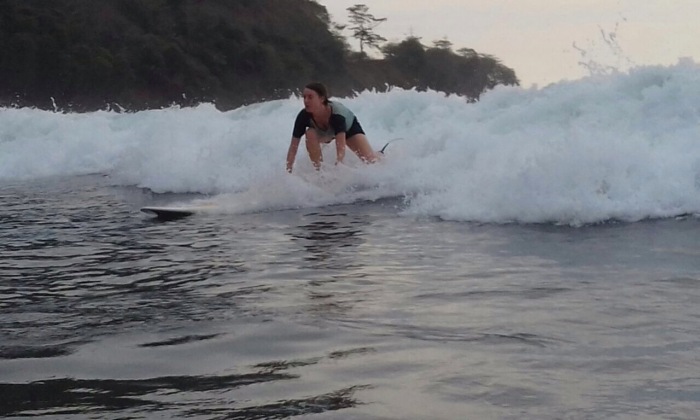

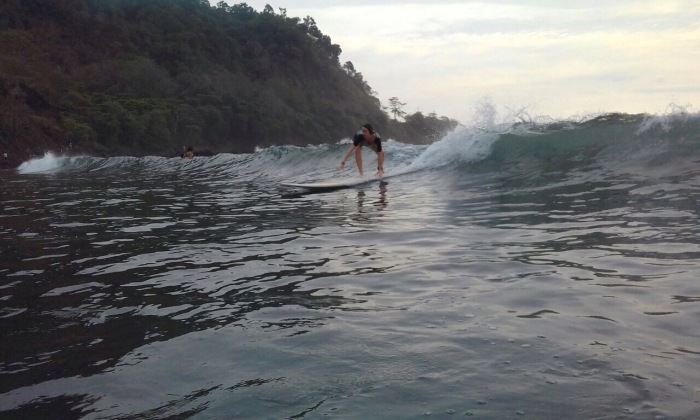

Field work adventures in Osa
My second round of Fulbright fieldwork took me down to the stunning Osa Peninsula this past week. David and I traveled there by bus, and even though the ride itself took almost 8 hours, I found the time flew by as I spent most of the ride mesmerized by the landscapes outside the bus window. We left from San Jose and the urban jungle quickly melted into hilly pasture lands, followed by cloud forest and some of the highest peaks of Costa Rica in the cerro de la muerte, and finally down to low altitude rainforest after following the slowly snaking Sierpe River for several kilometers. It was a good reminder that I still have a lot to explore here in Pura Vida land!!
We stayed at Fundacion Neotropica’s field station in Rincon de Osa, which is located about 5km from the bus stop in a lush, green area. The field station is over 25 years old and it has likely seen a lot of changes during its time on the Osa Peninsula. The peninsula is hard to access and is reputed for its low scale approach to tourism, with ecolodges vs. the large scale, foreign hotels that are to be found on the Nicoya Peninsula. With improvements in connectivity to San Jose in recent years, there are fears that Osa’s development trajectory may change and various NGOs are working hard to create plans to maintain the course of sustainable, small-scale development in the area. I hope that they are able to maintain the beauty and magic of this place.
Our fieldwork goals were twofold – 1) Interview different community members who were involved in the Blue Carbon program and 2) collect field samples in the mangrove reforestation sites. We began the trip with the interview part and we took trips to the local school, some homes, and an oyster farm to get all of the footage we needed. The oyster farm was our last stop for this phase and it was located in a beautiful corner of the gulf, with crystal blue water and verdant green hills all around. While not directly a part of the blue carbon project, it represents some of the sustainable livelihoods that healthy, restored mangrove habitat can provide! It was striking to see that most of the interviews were conducted with women, a reflection of the fact that the majority of participating community members are female.
After finishing the interviews, we moved on to the fieldwork. For this part, we had to visit various mangrove reforestation sites to take soil samples and to determine soil pH and salinity. It was a race against time with the tides, as some of the locations become completely inaccessible during high tide. The fieldwork took us to an older growth forest of mangle caballero (Rhizophora harrisonii) which was absolutely stunning. It was also neat to see how well some of the mangrove plantings were doing thanks to the efforts of Fundacion Neotropica! We managed to get all of the samples that I needed despite the time limitations, and I’m excited to see how the data compares to my other sites on the Nicoya Peninsula.
All in all, it was a fun and successful couple of days, that left me dreaming for more time in Osa!
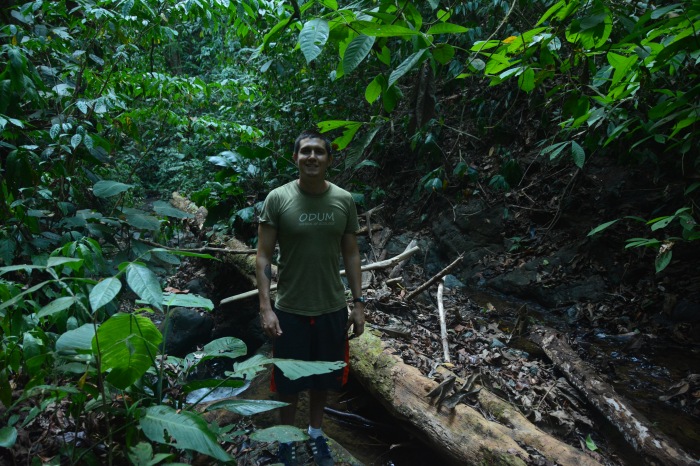
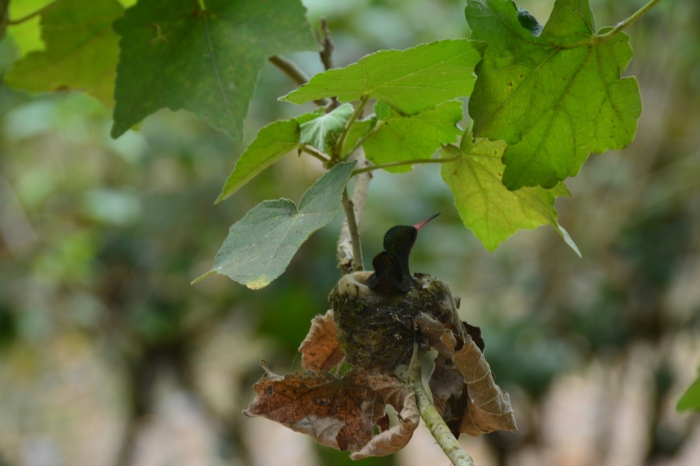
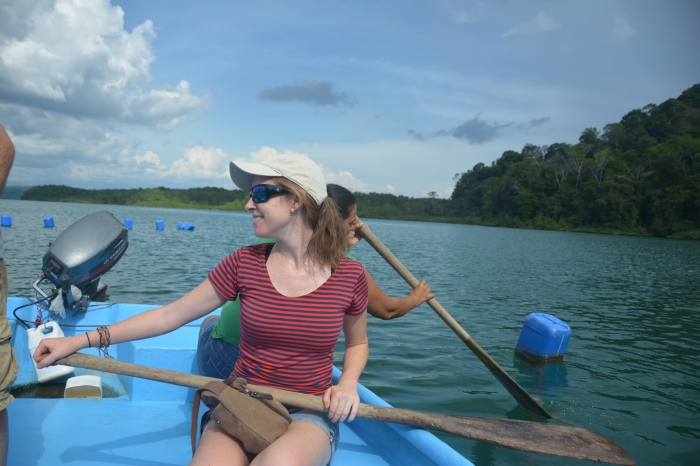

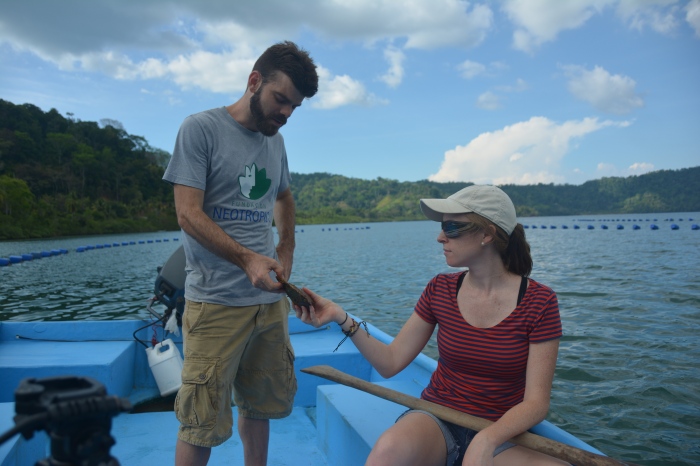
Field work adventures, part 1
My first official round of fieldwork took place this week, and it went amazingly well! We left San Jose at 5am to make the trek down to Chomes, one of the areas where Fundacion Neotropica works. Chomes is a small fishing village about an hour north of the port of Puntarenas on the Pacific coast. For the most part, the people of Chomes make their living as fishermen or by working in sugarcane plantations – two income sources which may in fact be at odds with one another..
Sugarcane is a very water intensive crop, and the use of pesticides in fields adjacent to the mangroves can negatively impact mangrove health. But in a community with few options for livelihoods, it’s difficult to navigate the topic when cutting off one source can mean no food on the table for an entire family. Hopefully the reforestation efforts in this area can provide a stronger incentive to make decisions that keep the mangroves healthy while allowing for the proliferation of sustainable livelihoods!
We went to two different sites within Chomes to take measurements. The first was an abandoned shrimp farm, which had patchy natural regeneration of mangroves. This site had really variable salinity, and will be the target of some future restoration efforts with Fundacion Neotropica. It’s pretty exciting because they are planning to go beyond their normal reforestation approach and tackle some of the underlying ecological issues causing issues in this site. Secondly we went to the site of FN’s reforestation in 2016. To get to the reforestation site, we had to take a boat ride with some of the local fishermen, and it was a gorgeous ride down a channel lined with mangroves. While there was a pretty high mortality rate, some of the little baby mangroves were doing alright, which is always nice to see! In both sites I took soil samples to measure for soil carbon, as well as in-situ salinity and pH measurements. These measurements were the first diagnostics ever taken at these sites and the results are already looking to be very informative for the reforestation efforts!
After doing the field work, we also managed to get in an interview with Aracelly, President of the all-female mollusk collection cooperative in Chomes. She is an inspiring woman, working to better her community and the environment. We learned a lot about what the mangroves mean to her and discovered that she’s a big fan of Colombian novelas! We discovered two puppies in her backyard which was the best kind of reward for finishing fieldwork in the hot sun.
I’m looking forward to more work in the Chomes community!
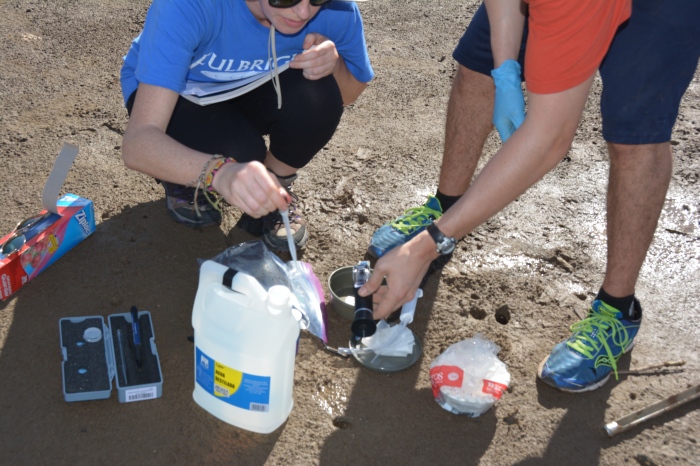
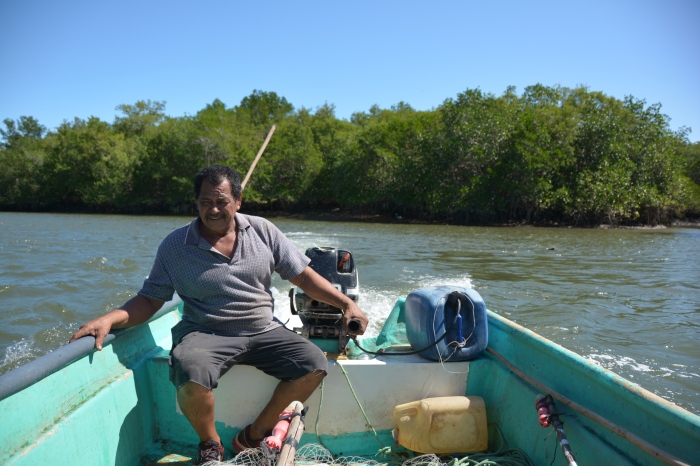
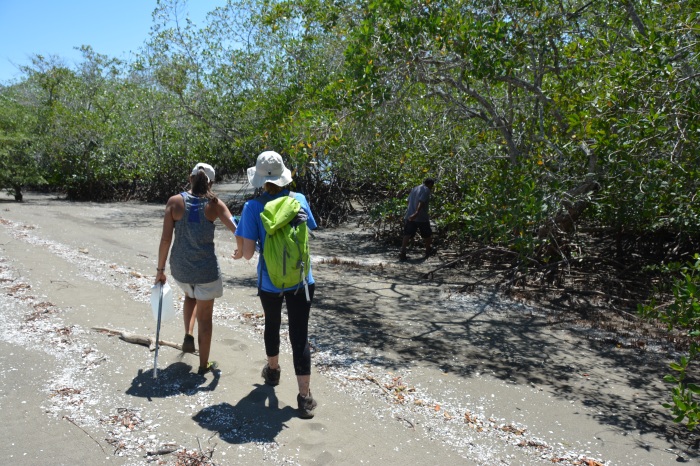
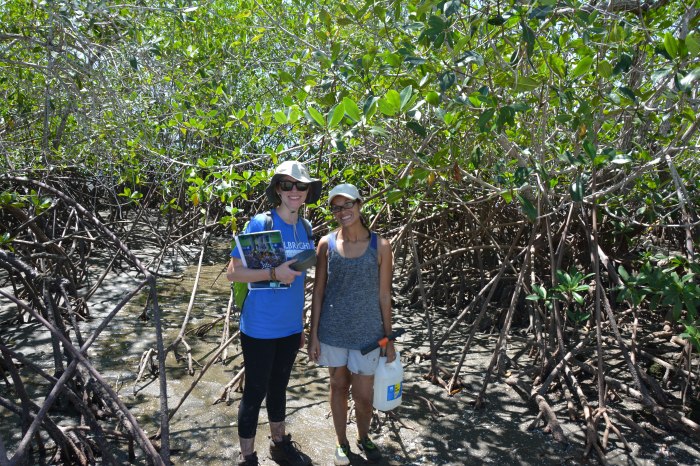
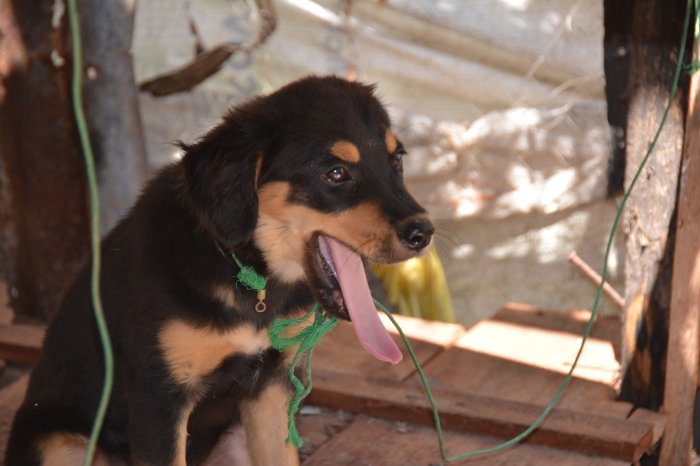
Fulbrighter of the Year event
Earlier this week I was graciously invited to attend the Fulbrighter of the Year event at the Museo de Jade here in San Jose, Costa Rica. The event was held to honor Dra. Sonia Marta Mora, who is the Ministra de Educación in Costa Rica, and completed a Fulbright in Pittsburgh several years ago. I arrived to the event a few minutes late, and was ushered in to an auditorium by some of the folks at the U.S. Embassy because the President was to enter last. I wasn’t sure who they were referring to, and thought perhaps it was to the President of the Fulbright Association in Costa Rica. To my surprise, after taking my seat in the auditorium the President of Costa Rica himself entered the room!
The presentation of the award was very lovely, with the US Ambassador and Costa Rican President both making remarks. President Luis Guillermo Solis was himself a two time Fulbrighter and Ambassador Haney knew Senator Fulbright personally. Dra. Sonia Marta Mora also shared some words on her experiences, and it was inspiring to hear how Fulbright had provided so many opportunities to so many people. At the end of the ceremony all of the Costa Rican Fulbright alumni gathered for a picture and I was invited to jump in too.
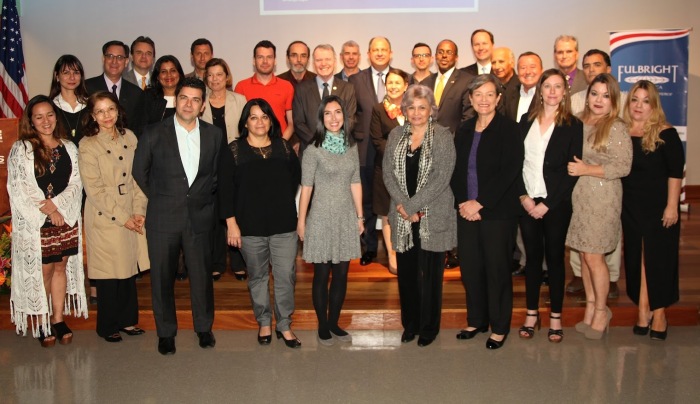
Following the ceremony, there was a reception in the hall with some light snacks and drinks. Some of the ladies from the Embassy helped me to meet President Solis, and it was such an amazing encounter. We chatted for a few minutes on my Fulbright project, and he seemed genuinely interested in my work. I feel privileged to have had this unexpected opportunity, and it inspired me to truly make the best of my time down here by giving back to the wonderful country of Costa Rica.
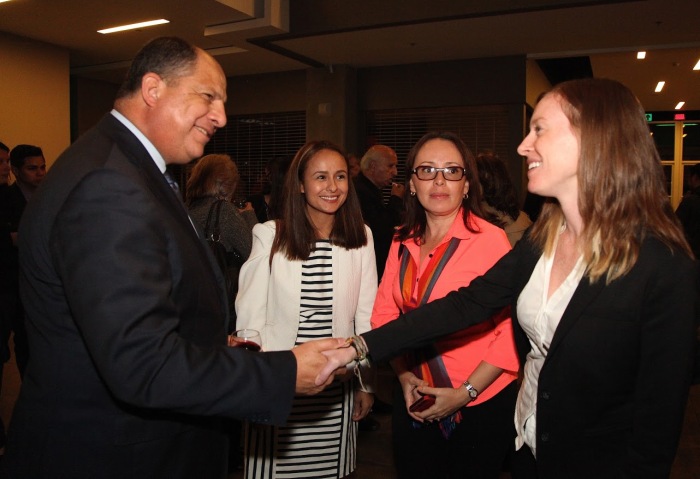
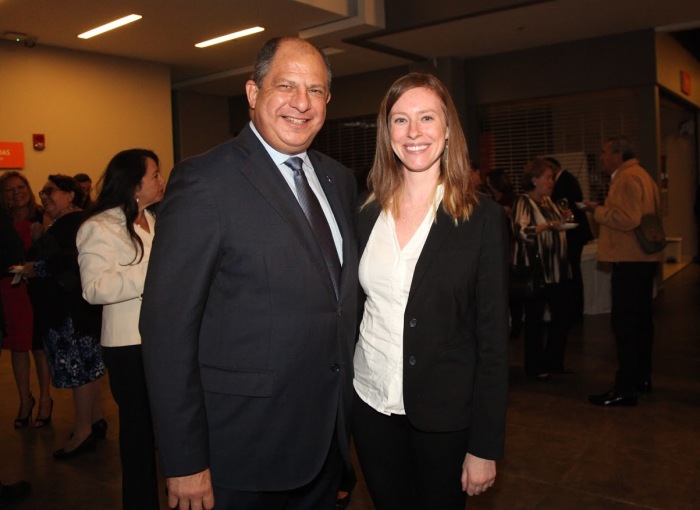
NYE in Puerto Viejo
After spending a lovely couple of days back in Florida, enjoying time with friends and family in the sun, I made my way back to Costa Rica to ring in the New Year. I arrived back in San Jose feeling a little sad to leave so many people that I love behind, but I figured a trip down to the Caribbean coast would help solve that. I left at the crack of dawn on Friday morning and arrived to the coast by around 10am. The bus to Puerto Viejo, the Caribbean town I chose to stay in for the weekend, literally drops you off on the Caribbean coast.. not a bad start to the weekend!
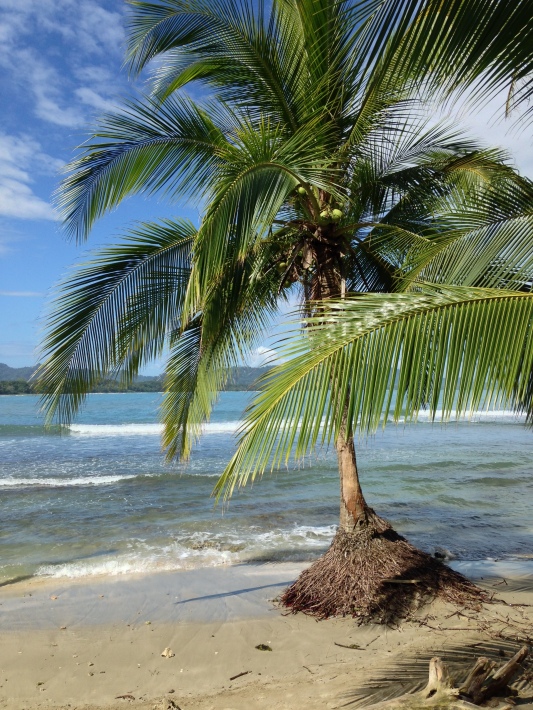
As soon as I got into my hostel, Rockin J’s, I befriended the girls in my room and headed to the beach with them. We went to Playa Cocles, a short ten minute walk from the hostel and lounged in the sand with quick dips in the Caribbean sea. It was an absolutely gorgeous day, with blue skies, bluer water, and lush forest along the coastline. After a few hours lying on the beach, my stomach began to rumble so I left the group of girls to head into town and find a bite to eat. I ended up at Puerto Pirata, a cute shop with sandwiches, fruits, coffee and more right on the water. There wasn’t a lot of room so I shared a table with Muchekwa, a lovely woman traveling the world from South Africa. After eating a delicious fruit salad and papaya juice, I went with Muchekwa for a stroll along Playa Negra, named so because it has black, volcanic sand. We watched the sun slowly set as we strolled, and were joined by an adorable pup for most of our walk. It was a fantastic start to the New Year’s weekend.
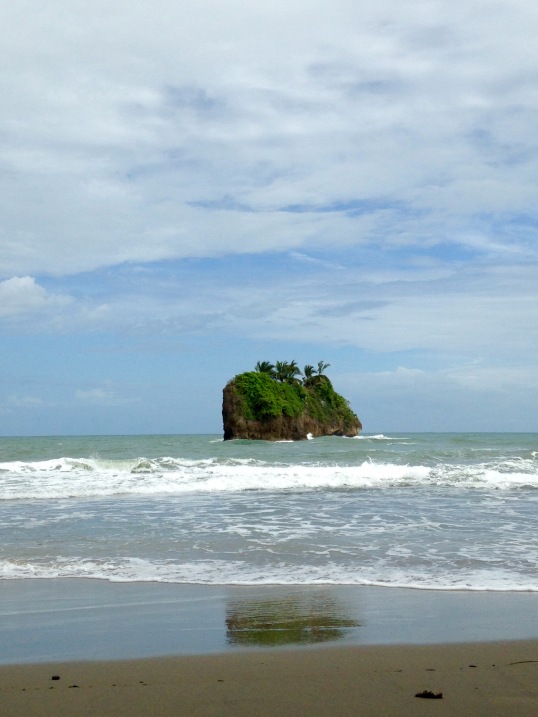

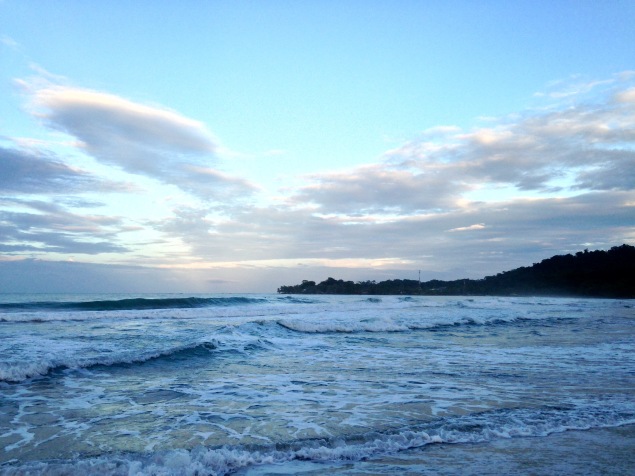
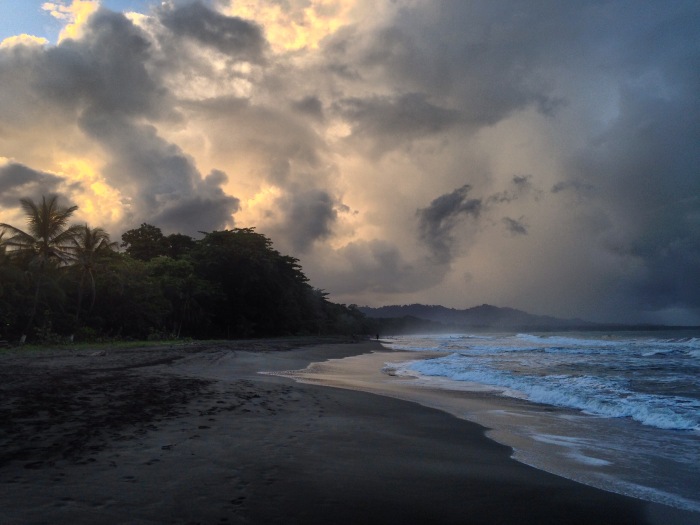
The following day, Saturday, started off a little rainy. The girls in my room decided to cancel their trip to Cahuita National Park, but I decided that a little rain seemed like the perfect atmosphere to stroll through the coastal rainforest of Cahuita. I hopped on a bus there without really knowing any details, so once I arrived I asked some fellow tourists, a man from France and a woman from Germany, for directions and I ended up spending the whole day with them. Cahuita is the only park in Costa Rica that is donation based, which is nice because often the parks have really high prices (comparatively speaking) for foreigners. Cahuita is known for its coral reefs, tropical rainforest, swamp forests, and many animal sightings. I did the full 8+ km trek with my new buddies, and we definitely saw our fair share of wildlife despite the rainy weather. All together we saw a sloth, several capuchins, raccoons, a yellow snake, ghost crabs, toucans, and several other birds. It was a really fun and muddy hike with several river crossings. After the hike we hitchhiked back to town with a Swiss couple and scarfed down some pizza. We made plans to meet up later that night to ring in NYE.

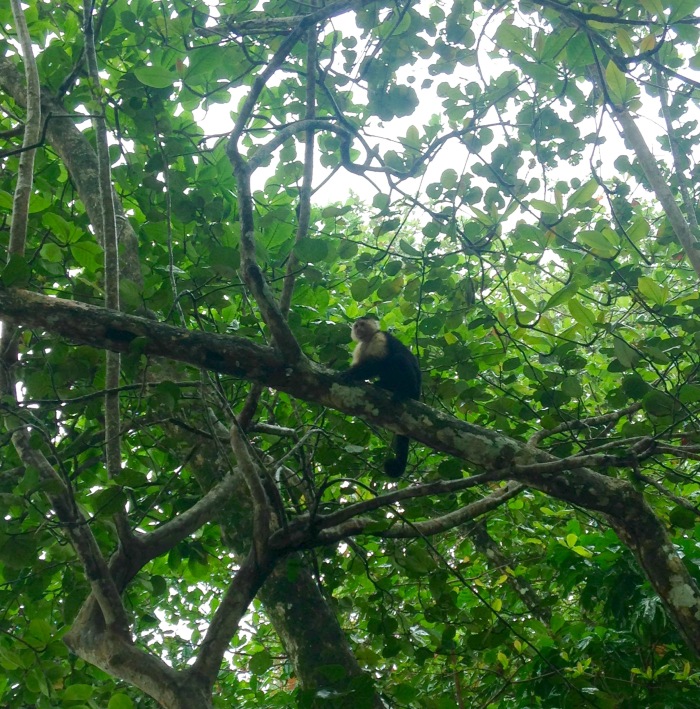
Later in the evening, I went to the hostel across the street where I met up with a motley crue representing the USA, Sweden, France, Germany, Switzerland, and Costa Rica. We made our way downtown to a bar on the beach and spent a lot of the night dancing in the sand and watching fireworks. It was a great way to ring in 2017, and though I missed my friends and family back in the States, I was happy to experience a Caribbean coast NYE too!
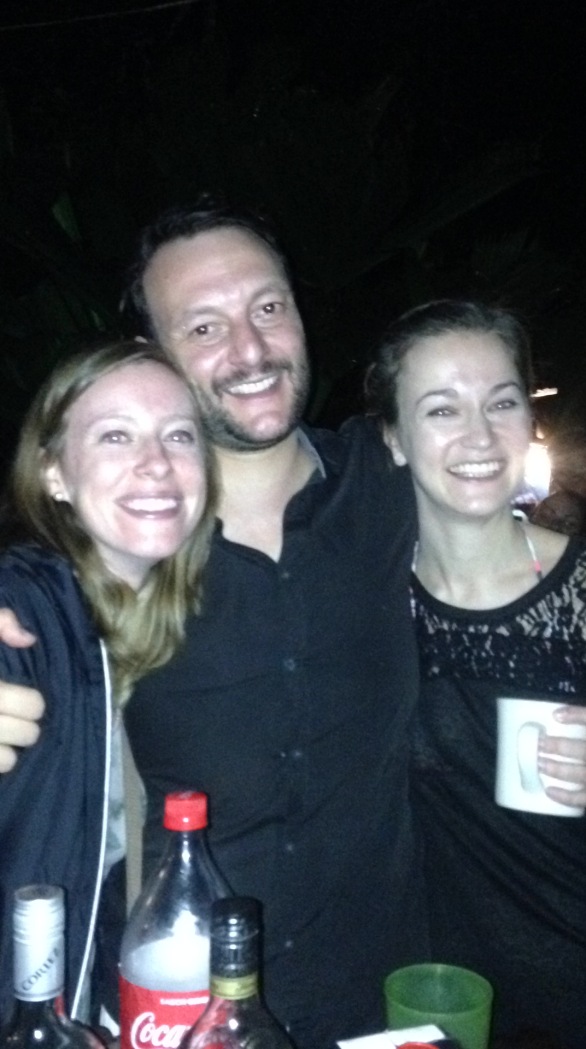
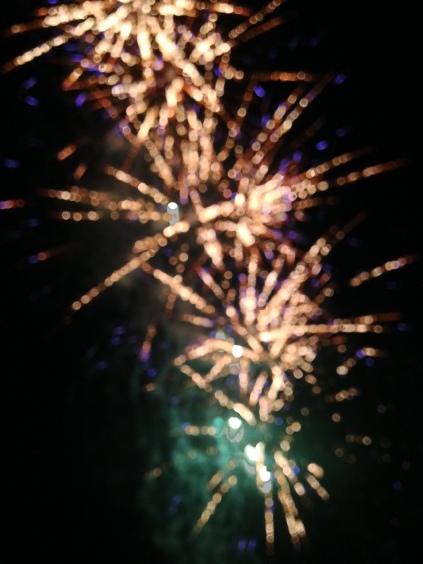
I spent the next day lounging on the beach and drinking fruit juices until my bus left back to San Jose. Bring it on 2017!
One month in!
Saludos de Costa Rica!
I am just about to hit the one month mark of my Fulbright, and I truly cannot believe how the time has flown! The transition to living here was remarkably easy, especially after spending several months in south Florida directly before my departure.
I am currently stationed in San Pedro, a a city in the San Jose area of Costa Rica. It is home to several large universities, including la Universidad de Costa Rica, and it’s an area known for having a lot of students. It is also close to Fundacion Neotropica, the NGO I will be working with throughout my Fulbright year. I was originally not looking forward to living in the capital, as it’s not particularly known for its green spaces, but it is truly starting to grow on me. There are several cute little neighborhoods that have a very Brooklyn feel, and especially with the holidays coming up there are cultural events just about every weekend. I am particularly looking forward to the Festival de la Luz this upcoming Saturday – essentially a giant parade of lights and floats for the holidays.
This past Sunday I had the chance to head to Chomes, Puntarenas, one of the areas that I will be working in throughout my time here. I went with Fundacion Neotropica for an Environmental Festival celebrating the end of their season down there doing environmental education and mangrove reforestation activities. We left San Jose at the crack of dawn to get there with enough time to prepare, and the whole Festival was nothing short of adorable! There were brief presentations on Blue Carbon and its importance, and then the attention shifted over to the children of Chomes. They built a paper mache model of their watershed, including where their little town falls right by the mangroves. They read a poem on the mangroves and had a choreographed dance to a song against pollution. Like I said, nothing short of adorable..
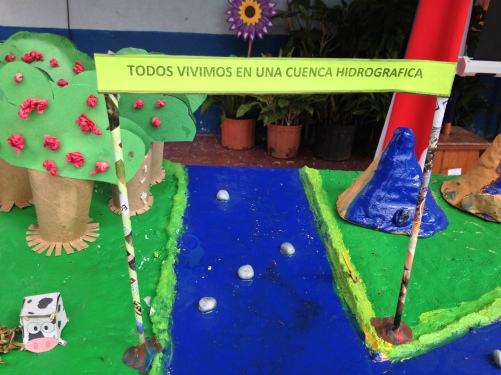
Watershed model has a good message for us all: “We all live in a watershed.”
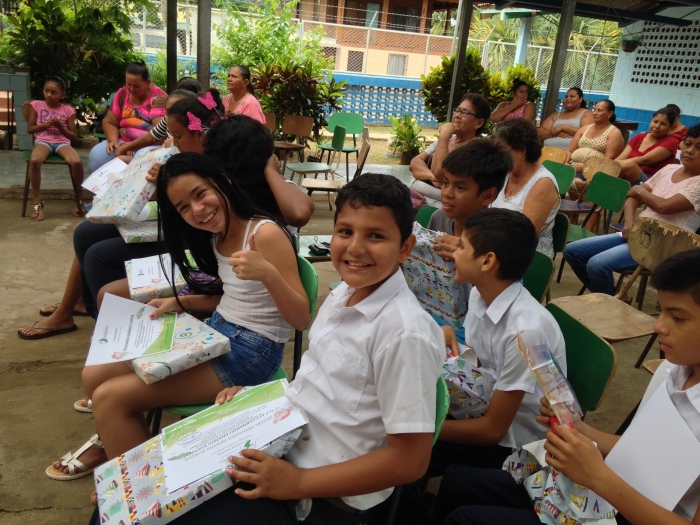
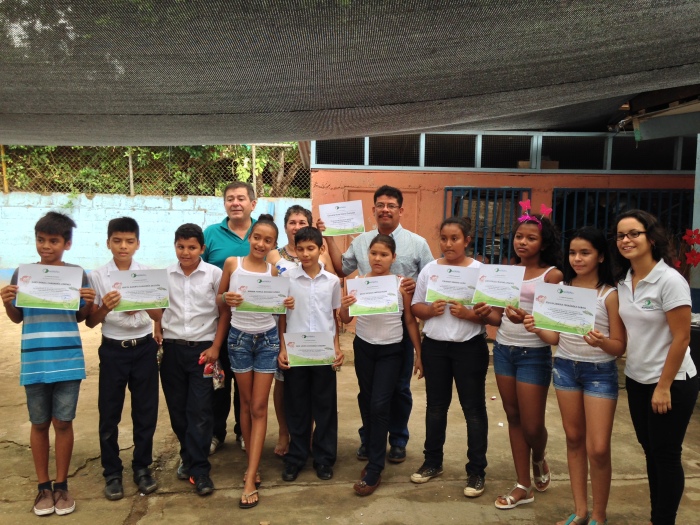
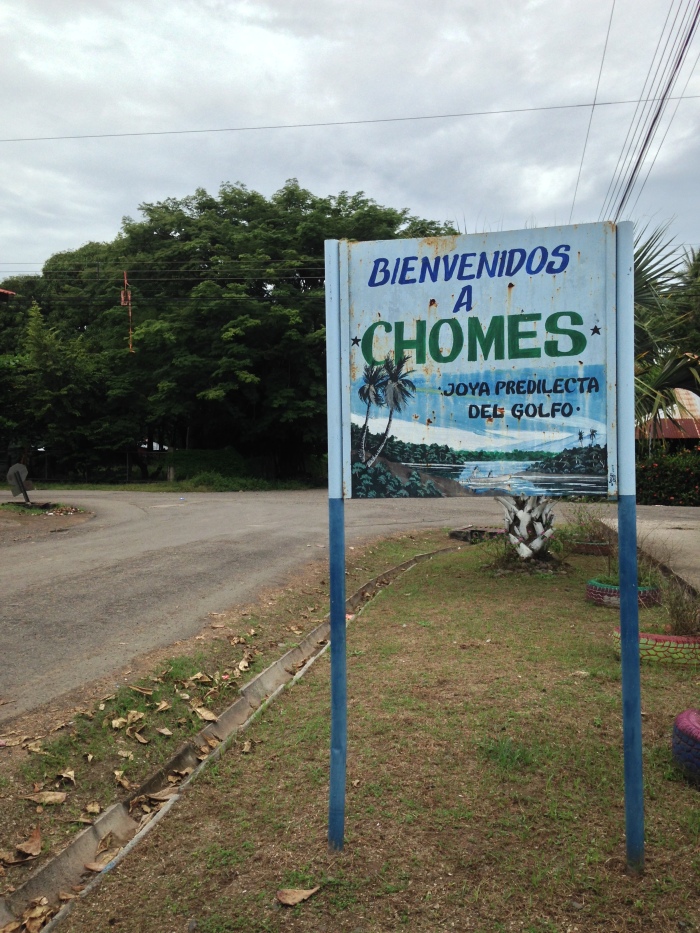
I am looking forward to engaging further in my project in the New Year – Pura vida!
Women of the mangroves
I am happy to share that Conservation International has published a piece I wrote on the women of the Ecuadorian mangroves on their Human Nature blog. I was very moved learning about the experience of these women, and happy that their story is being shared with a wider audience.
Check it out here:
Cheers!
Banos, Ecuador
As a reward to myself for finishing up my CI internship, I decided to spend my last weekend in Baños, Ecuador. Baños is located about three to four hours south of Quito by bus, along a beautiful route known as the Valley of the Volcanoes. This bus ride provides gorgeous vistas of Cotopaxi and the Illinizas, two massive volcanoes in the Cordillera de los Andes. The ride itself was already worth the trip, but there was much more beauty to come! I arrived in Baños a little late, around 7 or 8 pm and made my way to my hostel. I stayed in a hostel known as Casa de Molino Blanco, which was reasonably priced and a little off the main drag. They had a cute little pug named Maya as their mascot, and she happily greeted me with a wagging tail.
After checking in to the hostel, I wondered to the “downtown” part of Baños to get a bite to eat. Downtown is only about three blocks, but it was quite a bustling three blocks. The town is famous for melcocha, a type of taffy made with the abundant sugar cane crops that surround the area. The storefronts selling melcocha had people standing outside stretching out the candy and giving away free samples – yum! I found a cute cafe to grab some food in, but took it to go so I could sit in the downtown park and take in the sights and sounds of Baños as I ate. The town was full of all types of tourists, with just as many Ecuadorians on vacation as extranjeros. I signed up to take a tour the next day into the jungle, and happily made my way back to get some rest for the day ahead.
I woke up early to make it to the Tour Headquarters where I met my tour companions, some fellow Americans who were in Ecuador for various reasons. We set out in a tour van to the town of Puyo towards our first stop of the day at a monkey rehab center. Before we made it there, we spontaneously made an extra pit stop to take a cable car ride across a gorge to see a waterfall. It was a beautiful site and already made the trip worth it.. but there was much more to come! We continued on to the rehab center, and made a lot of new furry friends mostly due to our tour guide illegally smuggling some crackers in.
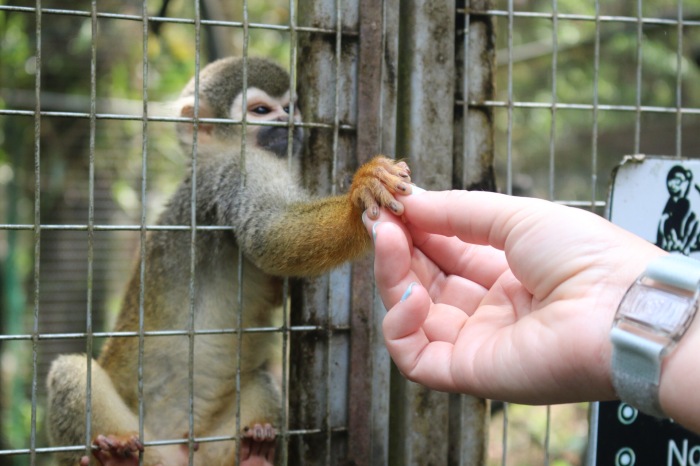
After playing with monkeys, we headed to our next stop, an indigenous community living next to a river. We drank chicha, practiced our blowdart skills, and had our faces painted with natural dyes.
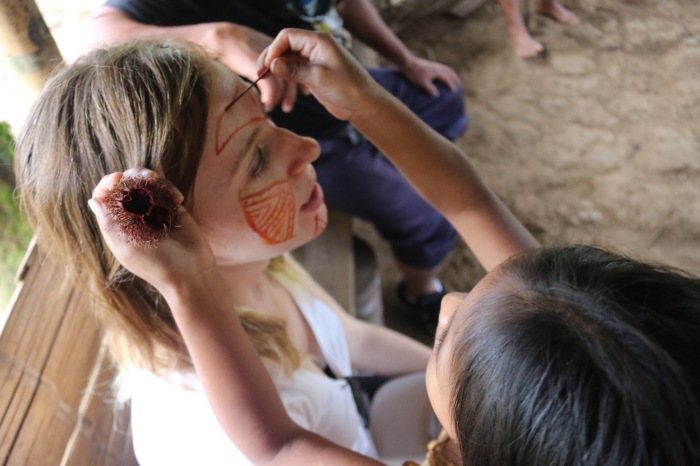
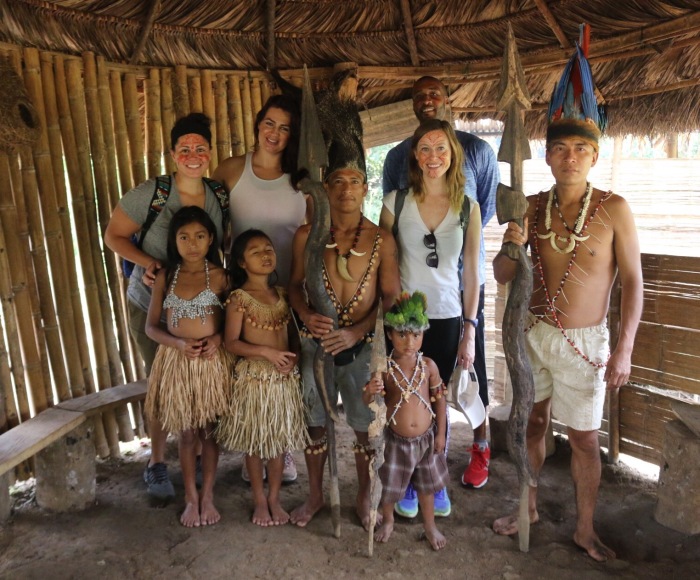
Following the indigenous community, we went on a boat ride down the river, exploring little tributaries off the river that had a mystical aura about them.
Next, we went to the Hola de Vida Reserve where we first hiked up to a rope swing, that let you fly from a tree on the edge of a green, lush cliff out over a beautiful river roaring below. Our next stop was further up the beautiful river, where we found a huge waterfall and swam in it’s cool water. Throughout the hike, our guide pointed out various flora and fauna, including the so-called “walking tree” and lemon ants, which we dined on as a little trail snack.
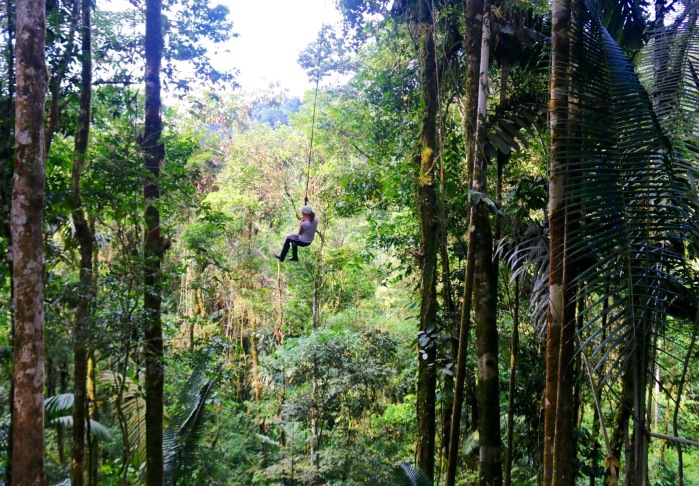
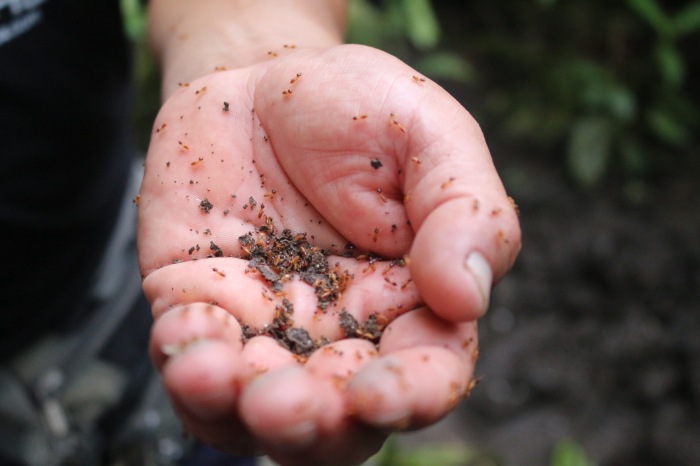
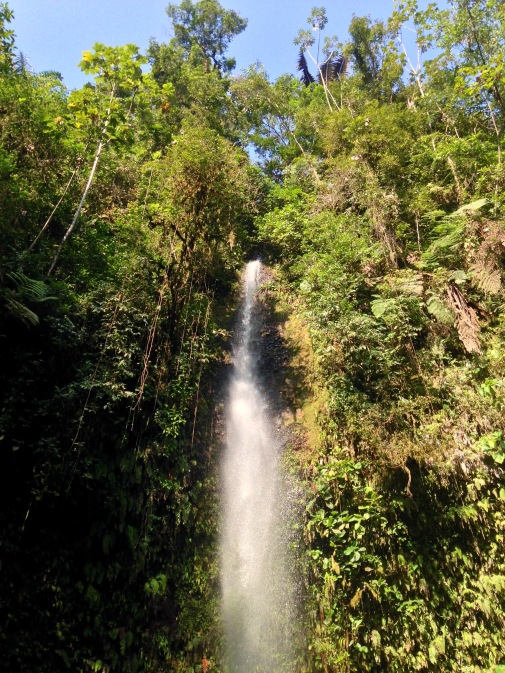
To round out the day, I went with my fellow tour members to the Leprechaun bar, a quintessential late night stop for Banos tourists. We were greeted with a free flaming shot, and explored the huge bar. There was a room with reggaeton music, one with salsa, and a chill patio with bonfire for those who preferred to chat rather than dance the night away. It was one of the most action packed days I had throughout my entire time in Ecuador!
